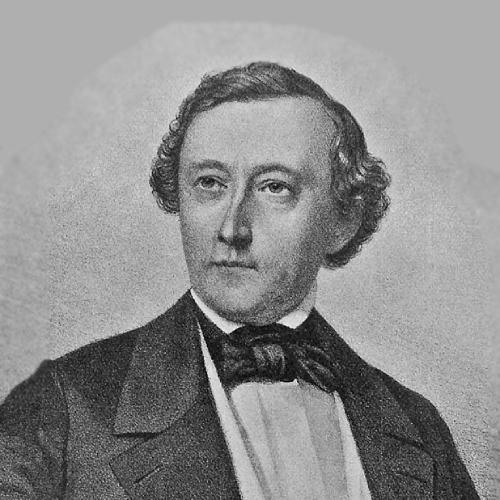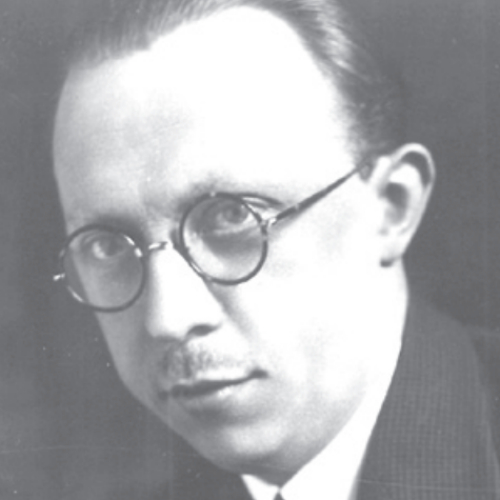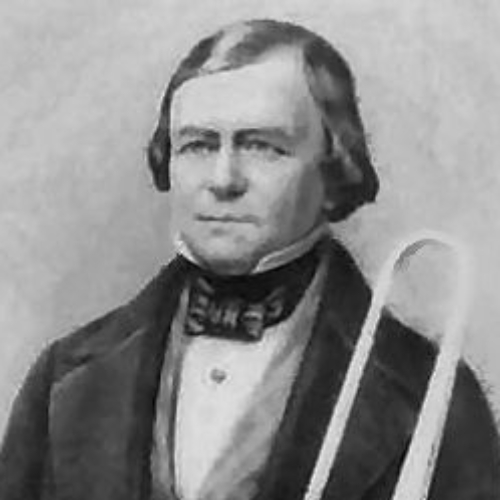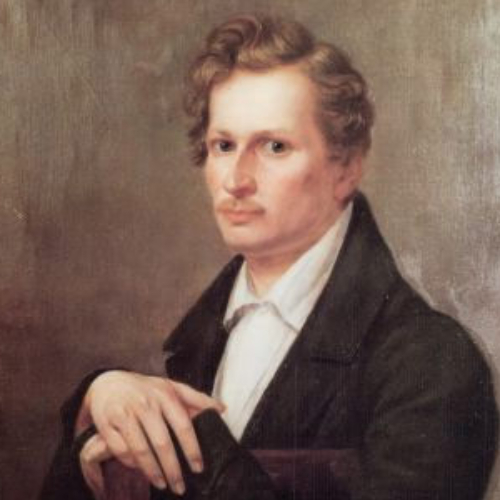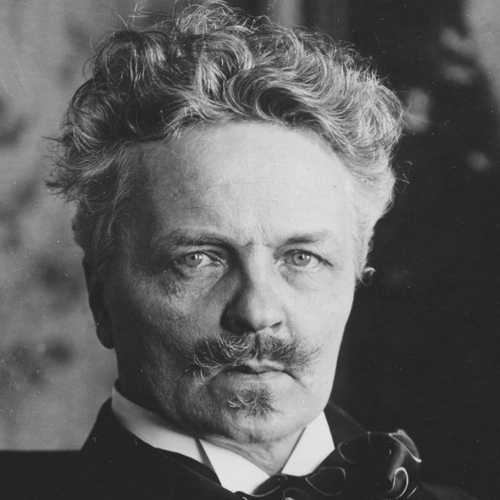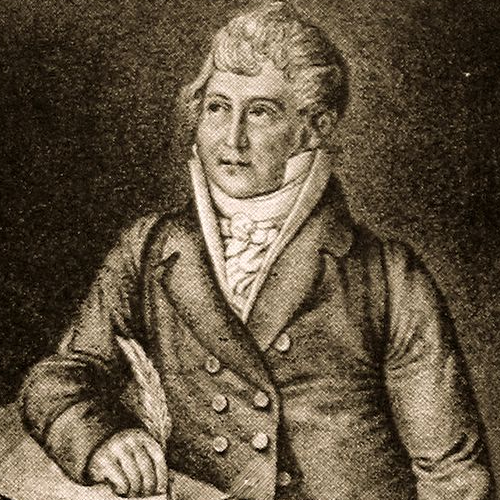From the Naxos Blog: August by name, not by nature.
August 05, 2022Here’s a small selection of works celebrating August, not as an evocative month approaching Autumn, but as a dedicatee (August Bournonville), a composer’s name (August Baeyens, Friedrich August Belcke), a source of literary inspiration (August von Platen-Hallermünde, August Strindberg), and an arranger (August Eberhard Müller).
Hans Christian Lumbye (1810–1874) began staging concerts in the manner of the Strauss family in his native Copenhagen after hearing performances by the bands of Joseph Lanner and Johann Strauss the Elder. Leading his orchestra from the violin, he provided entertainment at the Tivoli Gardens, toured abroad, and collaborated with the famous French-Danish ballet-master and choreographer August Bournonville.
August Bournonville was one of the first to recognise Lumbye’s special talent for writing catchy dance and ballet-music. From the beginning of the 1840s and throughout the next thirty years Lumbye composed the music for more than 25 dances and ballet divertissements by the choreographer. So it was only natural that Lumbye wanted, in 1869, to pay musical homage to his artist friend on the occasion of the ballet-master’s fortieth anniversary as a choreographer. The result was a galop titled Salute for August Bournonville, which has remained one of Lumbye’s most popular works in the genre.
Next to the Belgian violist and composer August Louis Baeyens (1895–1966), whose compositional style often reflected avant-garde elements; he wrote operas, eight symphonies, six string quartets and choral music. From 1927 to 1932, as the founding director of the Antwerp Chamber Ensemble, he gave many Belgian premieres of music by Schoenberg, Berg, Milhaud, Bartók, Hindemith, Stravinsky, and several Flemish composers.
Baeyens’ Jazz fantaisie (1926) for piano solo, his only foray into the popular style, displays such avant-garde influences, with its fragmented character and imitation of the more rhythmic and percussive qualities of jazz (and the date of composition testifies to his knowledge of the early touring Harlem jazz bands).
Nineteenth-century Europe boasted several trombone virtuosos, one of the most celebrated being the German Friedrich August Belcke (1795–1874). His Fantasia Op. 58 for trombone and organ was obviously written as a vehicle to display his own virtuosity, with its many melodic turns, leaps and arpeggios. It’s more than probable that this style of music was the starting-point for the work of John Philip Sousa’s famous trombone soloist Arthur Pryor, who extended the degree of virtuosity to even higher levels later in the century. It’s performed here by Canadian trombonist Alain Trudel, one of the world’s most respected trombonists, described as “the Jascha Heifetz of the trombone” by Le monde de la musique.
For the first of my vocal selections I’ve chosen the song that opens Brahms’ 9 Lieder und Gesänge, Op. 32, some of which set texts by the German poet August von Platen-Hallermünde. As explained by Ulrich Eisenlohr, the accompanist on our recording, “the work’s compositional complexity and penetrating psychological insight contribute to making the set a high point of Brahms’ song output. The dominant themes are the transience of life, and love amid difficult psychological complexities. August von Platen’s gloomy poems reflect his experience as a homosexual man, isolated and despairing, and thinking of death.” Here’s that opening song, Wie rafft ich mich auf in der Nacht (How I stirred in the night).
Wie rafft ich mich auf in der Nacht, in der Nacht,
Und fühlte mich fürder gezogen,
Die Gassen verlieβ ich vom Wächter bewacht,
Durchwandelte sacht
In der Nacht, in der Nacht,
Das Tor mit dem gotischen Bogen.
Der Mühlbach rauschte durch felsigen Schacht,
Ich lehnte mich über die Brücke,
Tief unter mir nahm ich der Wogen in Acht,
Die wallten so sacht
In der Nacht, in der Nacht,
Doch wallte nicht eine zurücke.
Es drehte sich oben, unzählig entfacht
Melodischer Wandel der Sterne,
Mit ihnen der Mond in beruhigter Pracht,
Sie funkelten sacht
In der Nacht, in der Nacht,
Durch täuschend entlegene Ferne.
Ich blickte hinauf in der Nacht, in der Nacht,
Und blickte hinunter aufs neue;
O wehe, wie hast du die Tage verbracht,
Nun stille du sacht,
In der Nacht, in der Nacht,
Im pochenden Herzen die Reue!
August Strindberg (1849–1912) was a prolific Swedish playwright, novelist and poet. The next song is a setting of text taken from his chamber play, The Ghost Sonata. It’s by Anton Webern (1883–1945) and is the third of his 4 Songs, Op. 12 that he composed between 1915 and 1917. Webern wrote his first songs when he was sixteen, and his last appeared in the mid-1930s. In all probability no other genre in Webern’s output outlines the composer’s rapid evolution so completely and profoundly. Despite our selected song’s expressionistic musical language, it’s a rather classical simplicity and clarity that set the tone in Schien mir’s, als ich sah die Sonne (It seemed to me that when I saw the sun). Here’s a translation of the text:
It seems to me that when I saw the sun,
I also saw the Hidden One:
every man delights in His works;
blissful is he who does good.
If you do something in rage,
do not heap spite upon your deed;
comfort the person you have wronged
and be kind, for it will benefit you.
Only those who have sinned live in fear:
it is good to live without guilt
Finally to the German keyboard player, composer, conductor and flautist August Eberhard Müller (1767–1817). He was also a noted arranger. And he got around. Born in Hannover, his career took him to Leipzig (where he was advisor/editor for the publishers Breitkopf and Härtel), Magdeburg, Berlin and finally to Weimar, where he ended his career as court Kapellmeister. He studied under Johann Christian Bach and was held in high esteem as a composer by Beethoven.
Carl Maria von Weber, a contemporary of Müller, composed his Piano Sonata No. 2 in 1816. Müller’s arrangement of the 4-movement work for flute and piano was one his last undertakings; he died the following year. We end with the sonata’s final movement.
